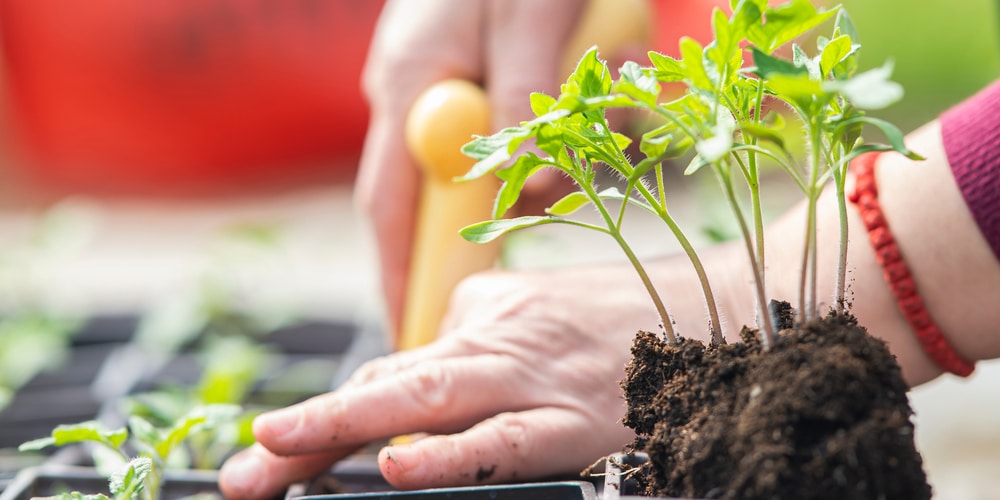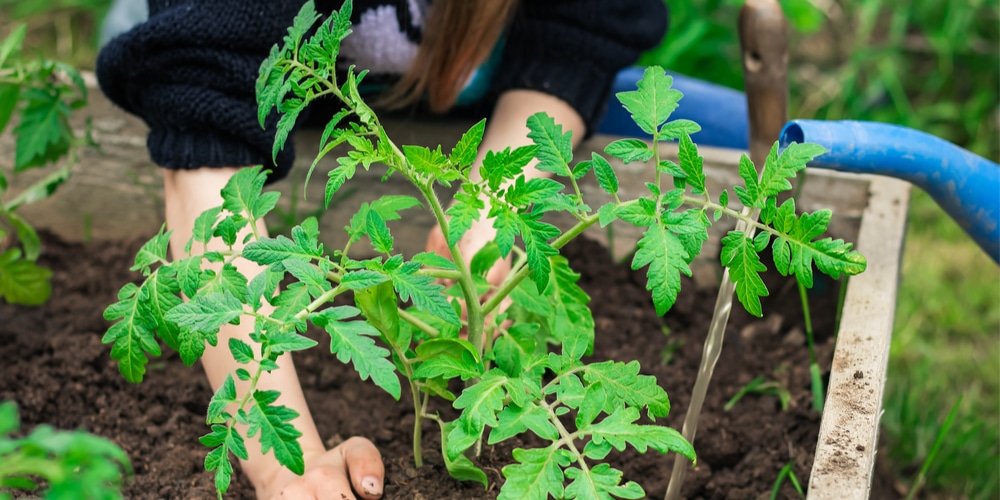Tomatoes are one of the most popular vegetables to grow in home gardens, and for a good reason. They are relatively easy to care for, providing a bountiful harvest of delicious fruit.
However, even experienced gardeners can sometimes have problems with their tomato plants. One common issue is wilting after transplanting.
While this may seem like a cause for concern, there are usually easy solutions to this problem. In this article, we will explore the possible causes of wilting tomato plants after transplant and some solutions that you can try.
Why are my tomato plants wilting after transplant?
A few possible reasons why your tomato plants might be wilting after transplanting. The good news is that, in most cases, the problem is easily fixable.
Transplant Shock
One of the most common causes of wilting tomato plants is transplant shock. This occurs when the roots of a plant are disturbed, causing the plant to go into shock.
The transplanting process can be stressful for a plant, and it often takes a few days for the plant to adjust to its new environment. During this time, the roots are unable to take up enough water to meet the plant’s needs, causing the leaves to wilt.
If you think your plant is suffering from transplant shock, keep it well-watered and give it plenty of time to acclimate to its new home.
Drought Stress
Drought stress is another common cause of wilting tomato plants. When conditions are dry and hot, plants can begin to wilt as they try to conserve water. If you think your plant is experiencing drought stress, be sure to give it plenty of water, making sure that the soil stays moist but not soggy.
You may also need to provide additional shade and/or mulch to help protect your plant from the heat. Once conditions improve, your plant should recover and begin to grow again.
This usually happens in the heat of the summer when the plant is trying to conserve water.
Pest Problems
Pests can also cause wilting in tomato plants. Aphids, for example, are small insects that feed on the sap of plants. This feeding can cause the plant to wilt and even die if the infestation is severe enough.
If you think your plant is being affected by pests, check it carefully for signs of infestation. Common signs of aphids include wilting leaves and stems, as well as a sticky residue on the plant.
If you find pests on your plant, be sure to remove them immediately. You may also need to treat your plant with an insecticide to get rid of the pests for good.
Too Much Water
It’s essential to keep your tomato plants well-watered, but it is possible to give them too much water. If the soil is too wet, the plant’s roots can begin to rot, causing the plant to wilt.
Be sure to check the soil before watering, and only water when the soil is dry. If you think your plant is getting too much water, try letting the soil dry out before watering again.
Ways to Prevent Tomato Plants Wilting After Transplant
One of the most challenging things about growing tomatoes is transplanting them without causing wilting. When a tomato plant wilts, it means that the stem has lost rigidity, and its leaves are drooping. This can be caused by a number of different factors, including damage to the roots, high temperatures, or low humidity.
Thankfully, there are a few simple steps that you can take to prevent your tomato plants from withering after transplant.
Water Thoroughly Before and After Transplanting
Doing this will help reduce stress on the roots and promote healthy growth. Watering before and after the transplanting process will also help keep the roots moist, which is vital for preventing wilting.
Transplant with Care
When you’re transplanting your tomato plants, be sure to handle them carefully. Handle the roots as little as possible and avoid bruising or breaking them. Gently place the plant in its new home, being careful not to damage the roots.
If this is the first time you’re transplanting your tomatoes, start with just a few plants to see how they do. Once you’ve mastered the process, you can transplant all of your tomato plants with confidence.
Choose the Right Time of Day
The best time to transplant your tomato plants is in the morning or evening, when it’s cooler outside. Transplanting during the heat of the day can cause wilting, so it’s best to avoid it if possible.
Acclimate Gradually
If you’re transplanting your tomato plants from indoors to outdoors, be sure to acclimate them gradually. Start by placing them in a shady spot for a few hours each day, then slowly increase the amount of time they spend in direct sunlight. This process should take about a week or two.
Doing this process gradually helps the plants get used to the change in temperature and light, which can prevent wilting.
Why are my tomato plants wilting after transplant: Final Thoughts
Transplanting a tomato plant isn’t exactly rocket science, but it takes a little bit of care and attention to do it right. By following the tips in this article, you can be sure that your tomato plants will stay healthy and happy after they’ve been transplanted.
Related Article: Basil Plant Wilting


